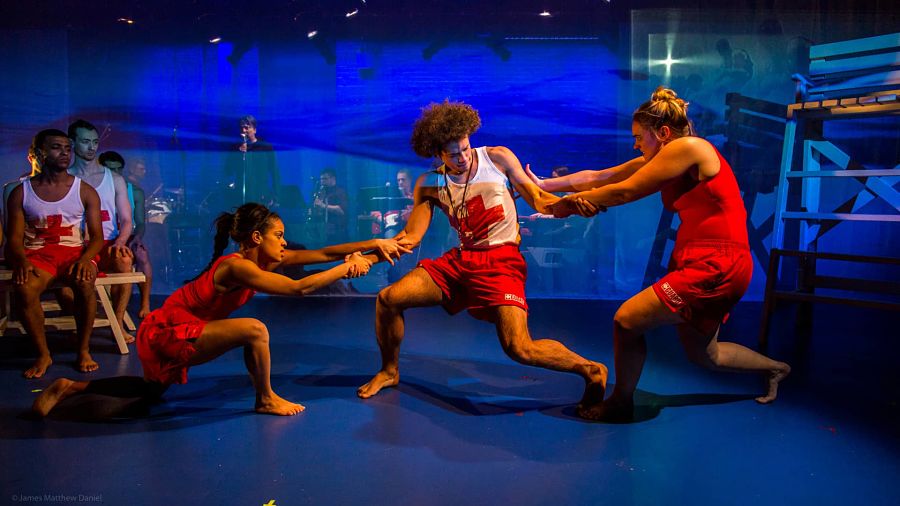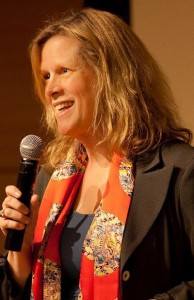
I recently finished my 11th pilgrimage to New York City for the Association of Performing Arts Presenters Conference (APAP), an annual wellspring for inspiration, artist/presenter matchmaking, and, in my case, planning the next season at FirstWorks, the nonprofit in Rhode Island’s capital city, Providence, at which I serve as executive artistic director. More than just a booking conference, though, APAP has become a full-body immersion experience into the performing arts with Under the Radar (UTR), Prototype, and COIL festivals, plus countless independent showcases and private performances. With this year’s theme of “Makers,” APAP posed some soul-challenging questions about how the work of presenters can be a voice for transformation.
What follows is a selective diary of my time racing around New York trying to take it all in.
Thursday, Jan. 20
At an UTR symposium, APAP CEO Mario Garcia Durham issues a call to “nourish the voices of artists at this time.” The Public Theater’s Oskar Eustis, who has been so supportive ever since I formed FirstWorks in 2004 (he has some roots in Providence), speaks to the “explosive, radical idea to always expand who is at the table.” Like all the nonprofit leaders I know, I am always thinking of how the work I’m so passionate about can be a change agent, creating new realities and shared cultural capital. Outgoing UTR codirector Meiyin Wang’s valedictory description of jumping off the metaphorical cliff pumps me up for the risk inherent in presenting new work.
2 p.m.: Now I’m Fine. Edgy standup comedy from Ahamefule J. Oluo, who’s backed by a 17-piece orchestra. “How noticeable do you need to be to be noticed for being unnoticeable?” is one memorable quip. Also this great line about his mother: “She spews words with a reckless abandon that Joe Biden could only dream of!” The presenter audience is in love with this show. I wonder: What elements of the NYC arts ecosystem might we foster in our small but vibrant southern New England city?
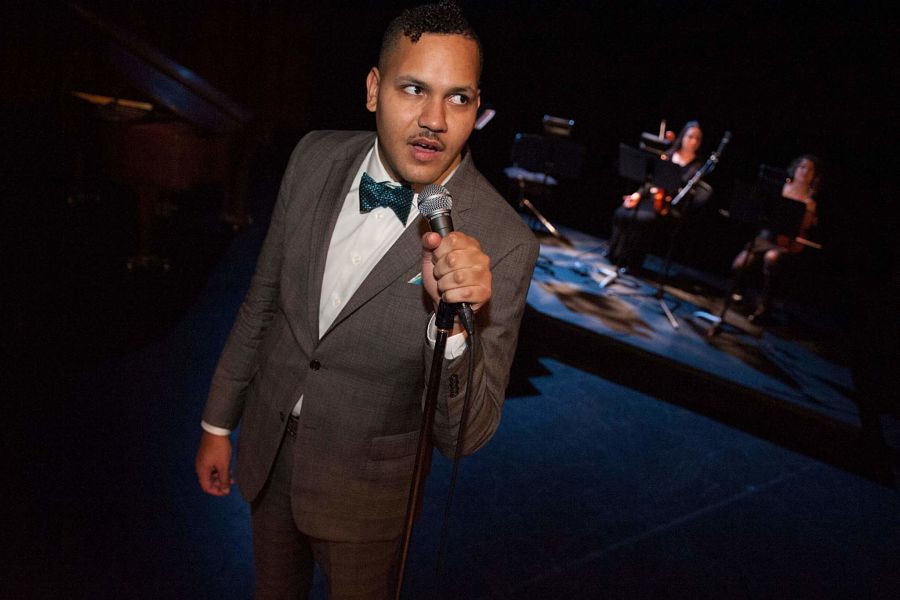
4 p.m.: Institute of Memory at UTR. The illusion of stability in the white fluorescent blueprint outline of the room hovers overhead—until Lars Jan acts as a master manipulator and it becomes floor and walls, a presence and a surrogate for the surveillance that is the subject of this piece. Thanks to the Rhode Island School of Design (RISD), Rhode Island has the largest per-capita concentration of artists of any state, so not only do I love the visual life of this piece; here’s a point of entry! Since I am curating for the PVDFest at FirstWorks, I’m going to explore importing Jan’s aquarium mega-spectacle.
8 p.m.: The Good Swimmer. Prototype presents a buffet of indie chamber opera, still cooking on the stove, and we get the first taste of the primordial stew. I’m yearning to connect R.I. audiences with the fertile process of generating new work. The scrim of waves here recalls the delicious pleasure of Bill Viola installations; there are black-and-white lifeguards, cobalt blue walls all around the HERE space, red swimming trunks, white chair.
Friday, Jan. 21
My strategy: Alternate days of binging on theatre with days of digging into conversations about what it would take to bring artists to my stages at FirstWorks, which vary dramatically in scale from the grand outdoor setting attracting tens of thousands to a gorgeous 1,900-seat historic theatre, down to club spaces of 150. Today I begin to make the rounds of some 50 conversations with artists and agents.
Bill T. Jones exits the stage after his solo, created for APAP, singing the words Maya Angelou gave him: “Walk, walk, don’t you get weary.” And Anna Deavere Smith repeats the question at APAP’s opening plenary: Are we a community? Responses start the thinking that will propel me through the next three days: I believe in building the communities in which we want to live. And: It’s not that easy. Followed by: Maybe someday we’ll get there. And: You know how difficult it is to get people to get into a room that are different colors.
7 p.m.: Bone Hill at Under the Radar. I’m already in love with Martha Redbone from her 2014 FirstWorks residency. Add some fish tacos and white wine and we’re off to a great start. I settle three feet from the stage at Joe’s Pub for the personal family-tree telling, which seems to be song/story/dance, even though Redbone has barely a square foot to move in. Thoughts: Creating a “cosmopolitan” audience (thanks to Yo-Yo Ma for shaping my thinking about this during his collaboration with FirstWorks) is an essential part of the presenting equation that I’m after. What work might provide the points of entry to draw many different people together?
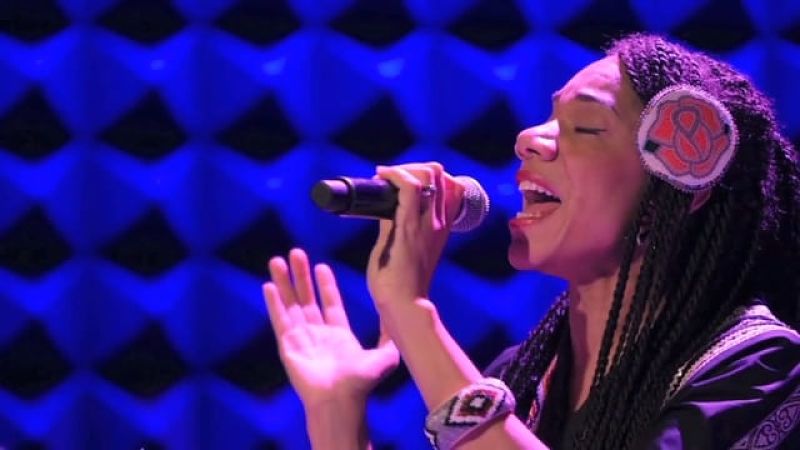
Saturday, Jan. 22
Passing old friends on the street, the hotel bar, the lobby of the Public. APAP NYC feels so cozy, not only as a throwback to the decade when I ran an experimental puppet theatre in Soho, but also in the arts it is like the world’s biggest small village.
8 p.m.: The Last Hotel at Prototype. I’m mentally transposing the young/old audience at St. Ann’s Warehouse‘s thrilling new Brooklyn space to my own PVD. Glorious singing and lush melodic lines juxtaposed with found text, projected images of food or architectural plans, sound collage, and a porter who circles the stage platform like Mephistopheles on speed. Opera, where are you headed? I’m synthesizing it in my head for days afterwards.
Sunday, Jan 23
Still lingering in my mind: how to find those points of entry for audiences not already ravenous for new art. Also mulling how to create experiences, context, a forum for discussing and debating the parts that don’t work. “Finding endings is hard,” Laurie Anderson generously comments as I recount pieces I’ve seen so far at UTR.
1 p.m.: Employee of the Year at UTR. With eyes closed I would know from the clarity of timbre and meaning that these are voices of young girls. “I’m 3.” “I’m 17.” “I’m 71.” They encapsulate a life in 90 minutes of theatre.
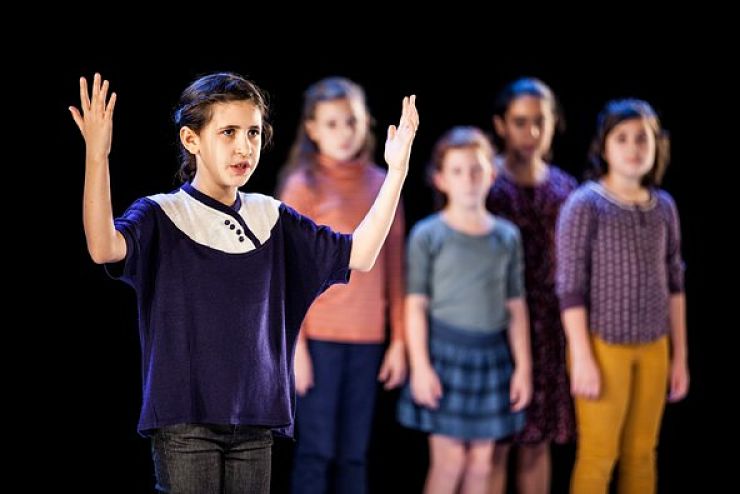
3 p.m.: Escuela at UTR. Work that shines a light on where the world is headed—yet all actors are hooded, anonymous, making a revolutionary whole. We read subtitles projected above a blackboard about the act of firing a gun, triggering a bomb. “We’re like holy pastors.”
5 p.m.: Bill T. Jones again, at New York Live Arts, the joint he runs. We see two excerpts from his Analogy trilogy, in which oral histories are transmuted into art. They include that of his 95-year-old French Jewish mother-in-law, Dora, and his nephew, Lance. In ordering and reordering motifs of music, speaking, movement, it is Jones’s version of Gesamtkunstwerk. A master at the height of his powers, Jones has been with us twice at FirstWorks; what first compelled me about his work was the power of his voice telling the story of his grandmother.
7 p.m.: GlobalFest. Pro tip: Never miss the chance to hear 12 bands from around the globe traipsing up and down the crowded stairwells of Webster Hall.
Monday, Jan. 24
A day of working the three floors of exhibition halls and melding, Sudoku-like, a season plan of curatorial aspirations with fundraising, theatre avails, community engagement, and marketing to map a journey into new ways of seeing for our audiences.
5 p.m.: Hair Stories and Walking with ‘Trane. This City Center showcase lets me catch up with Urban Bush Women and founder Jawole Willa Jo Zollar. I’m proud to know that FirstWorks is already immersed in engaging our community with UBW in clubs and community spaces prior to the planned R.I. premiere of this exhilarating Coltrane work. We’ll be walking the talk and talking the walk throughout February with workshops, talks, club events, and dinners around this phenomenal new work.
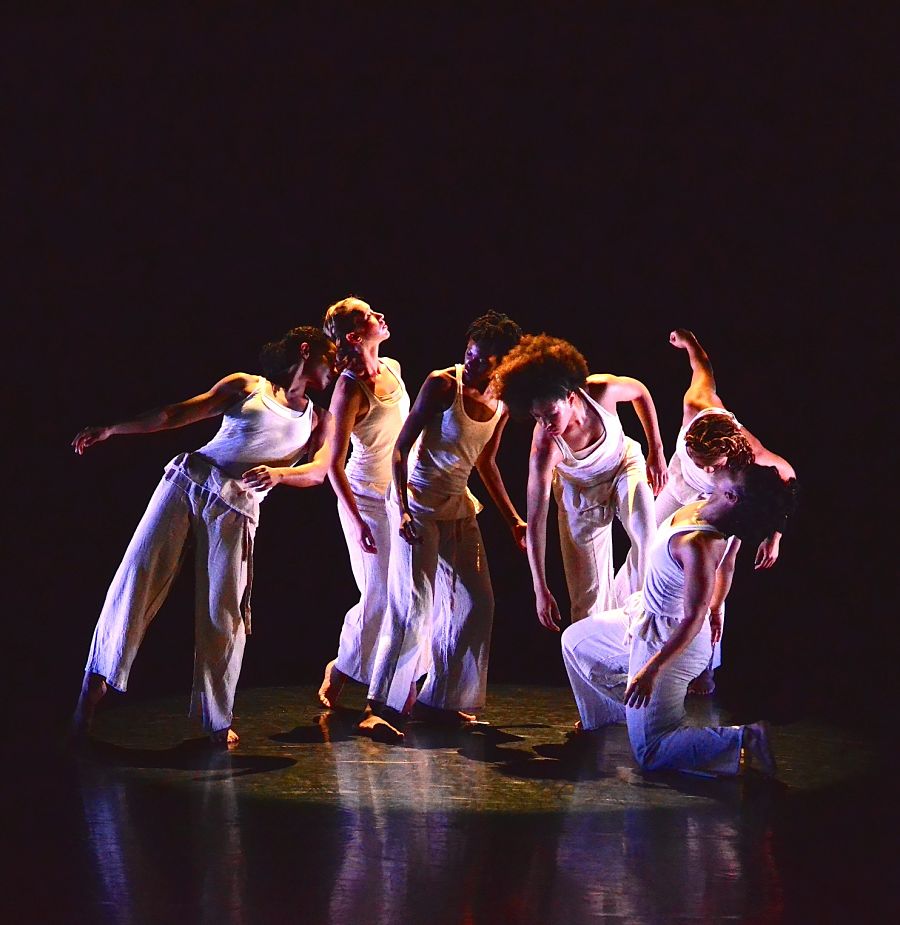
I cap APAP with music—Monsieur Periné at SOB’s, then a fast dash to Brooklyn Bowl for Dhaka Braka—and I’m ready to reconsider the value of sleep. I head home to figure out new ways to marry community, logistics, and raison d’être together into a season of art worth fighting for.
Kathleen Pletcher is executive artistic director of FirstWorks in Providence, Rhode Island.

